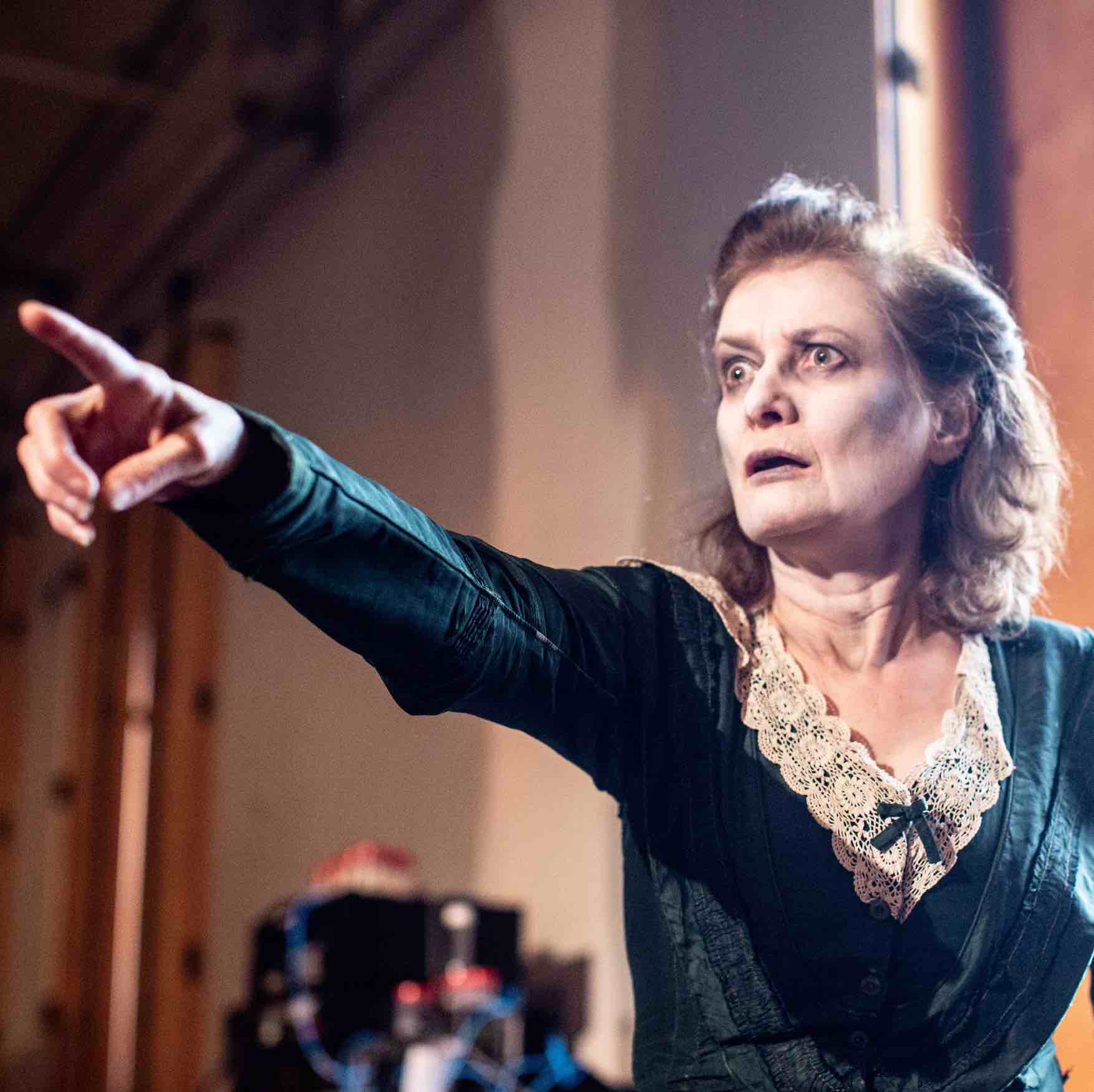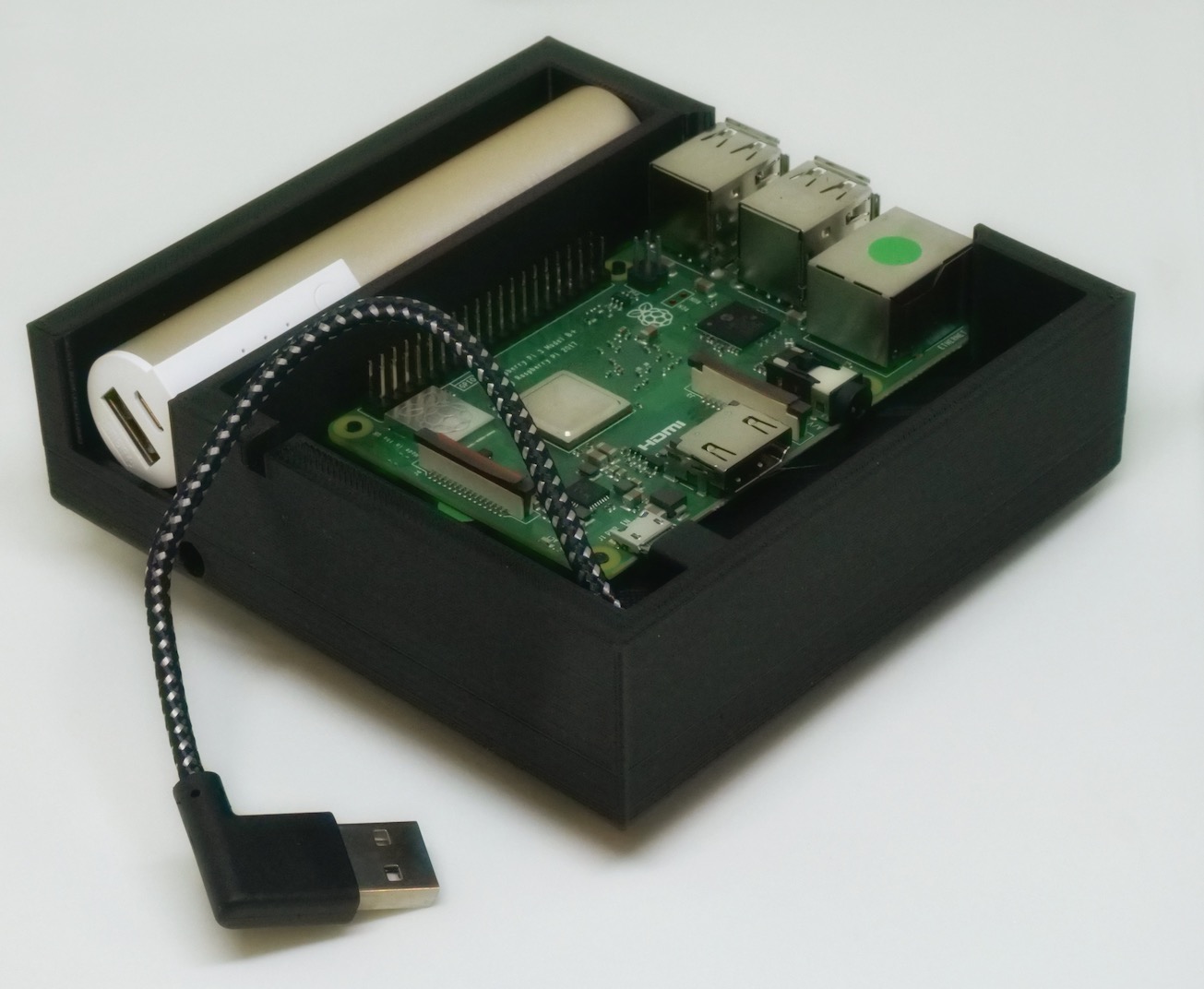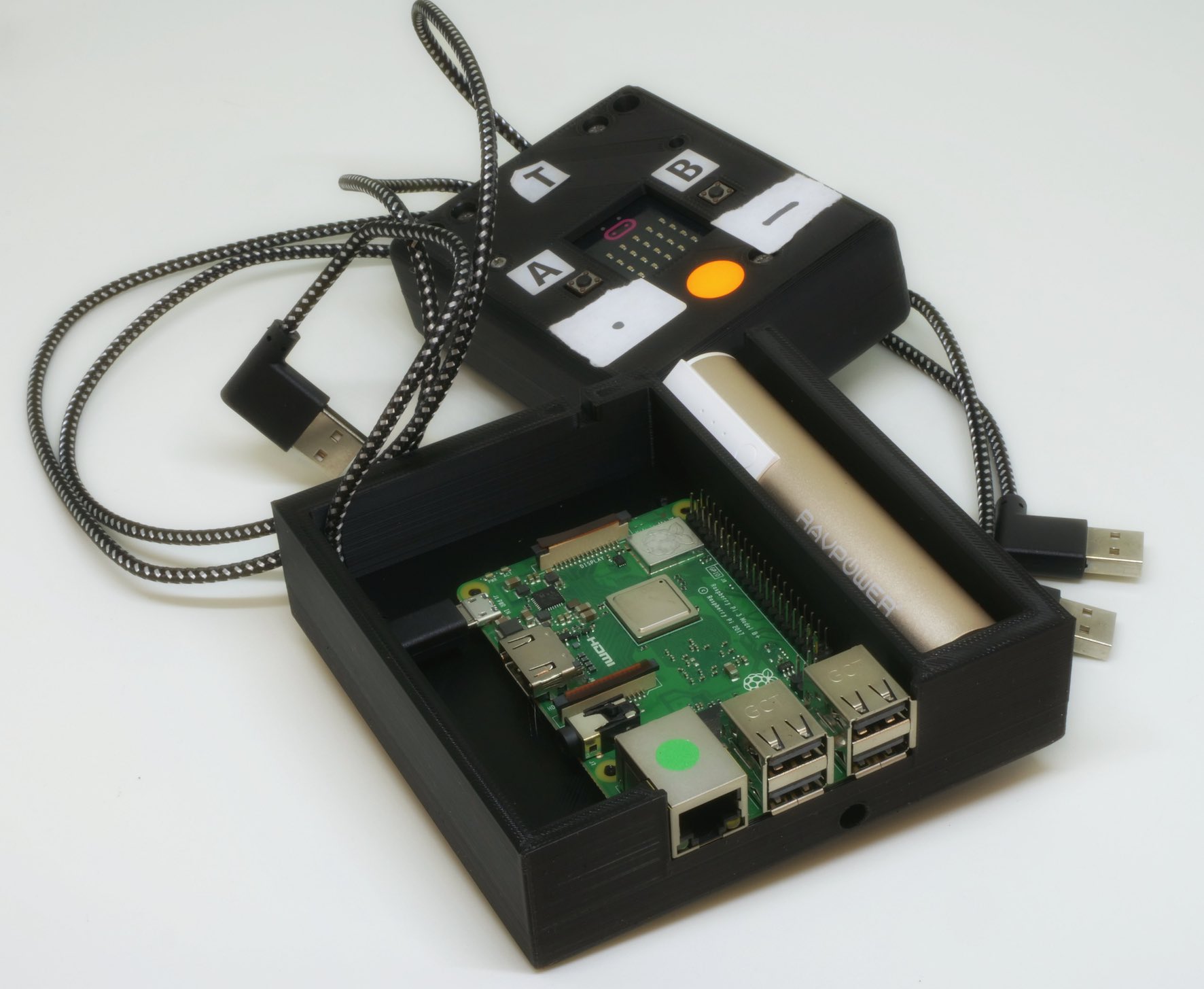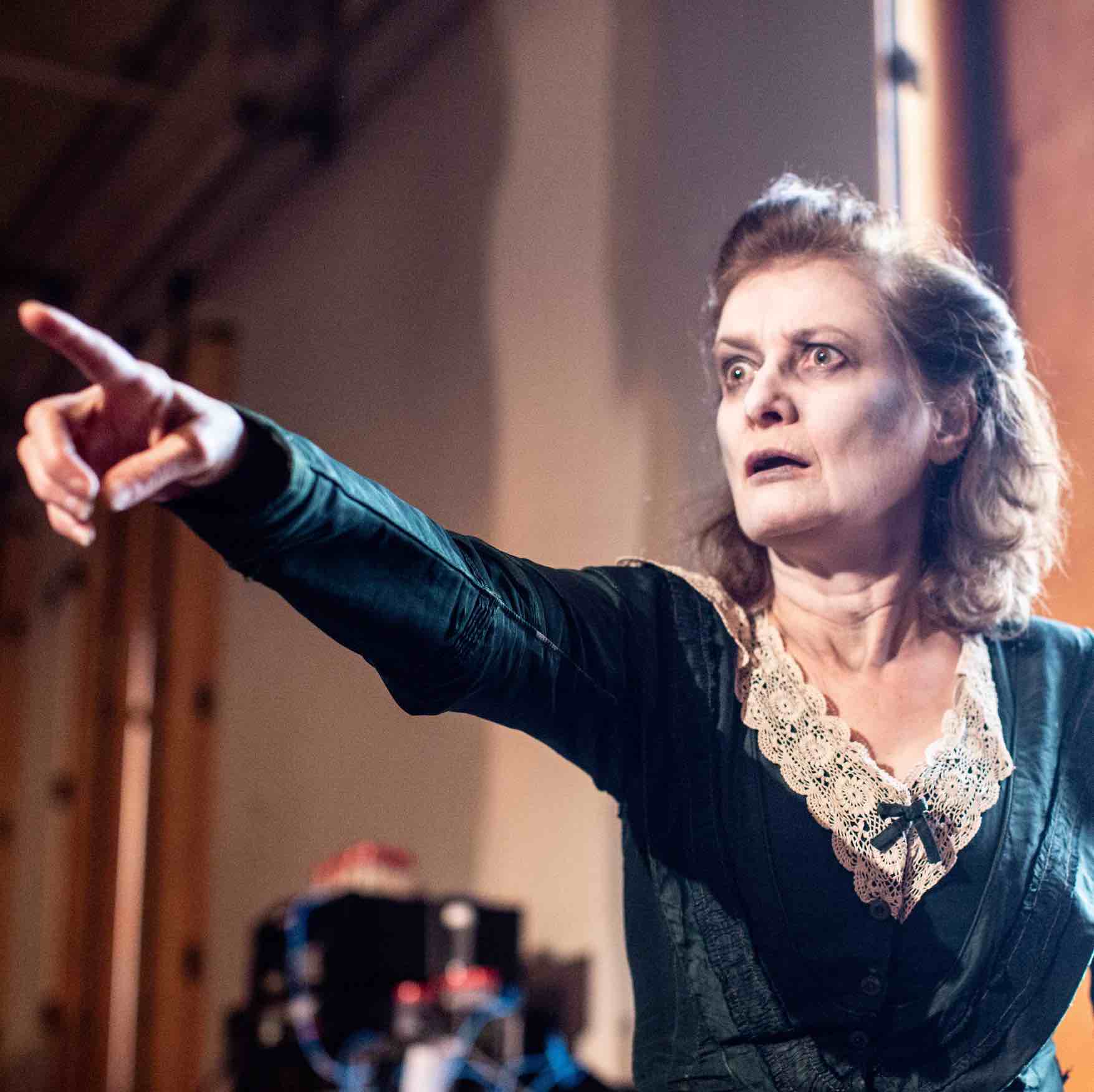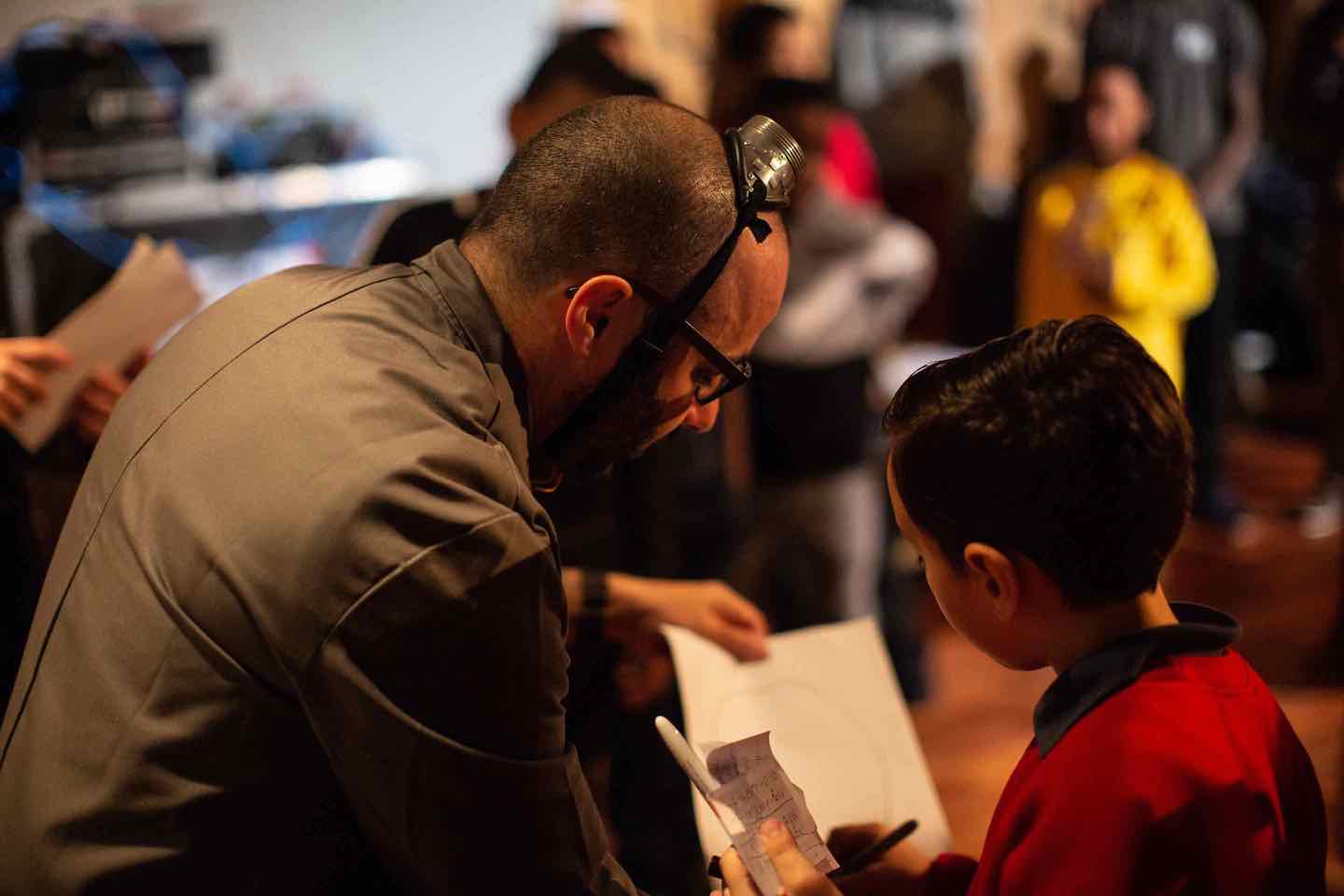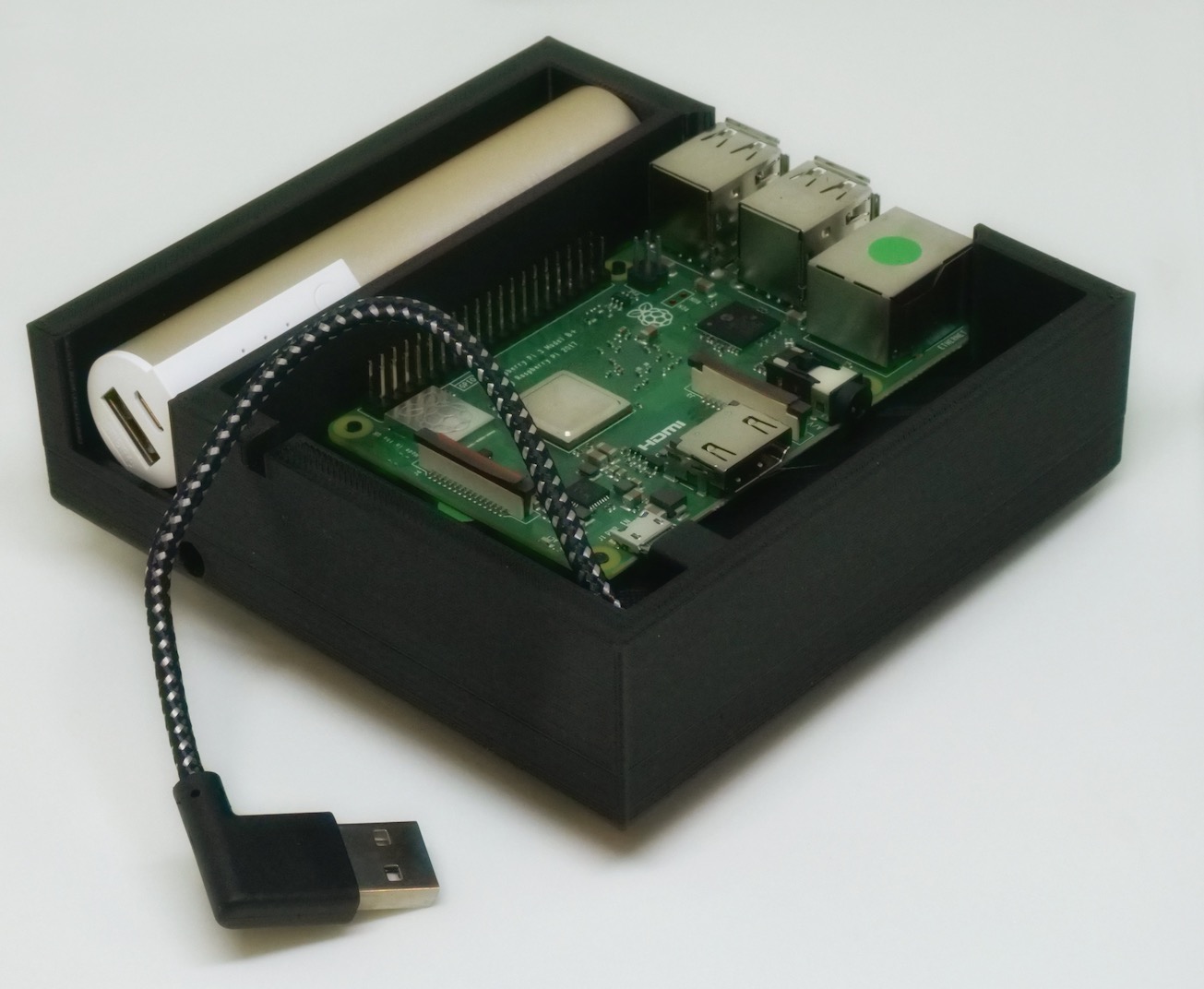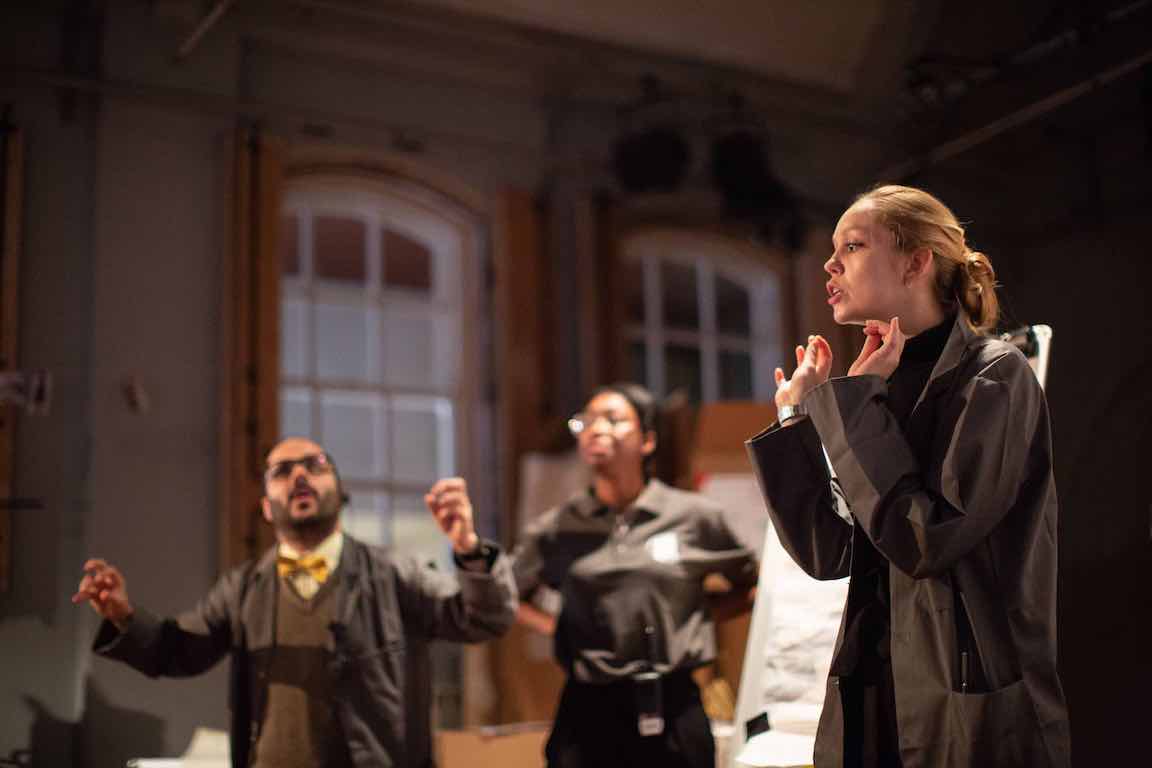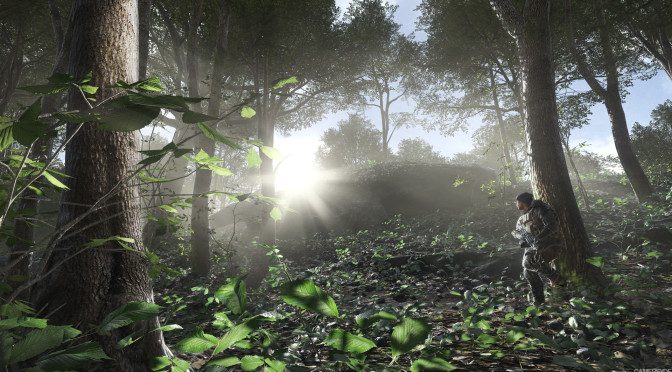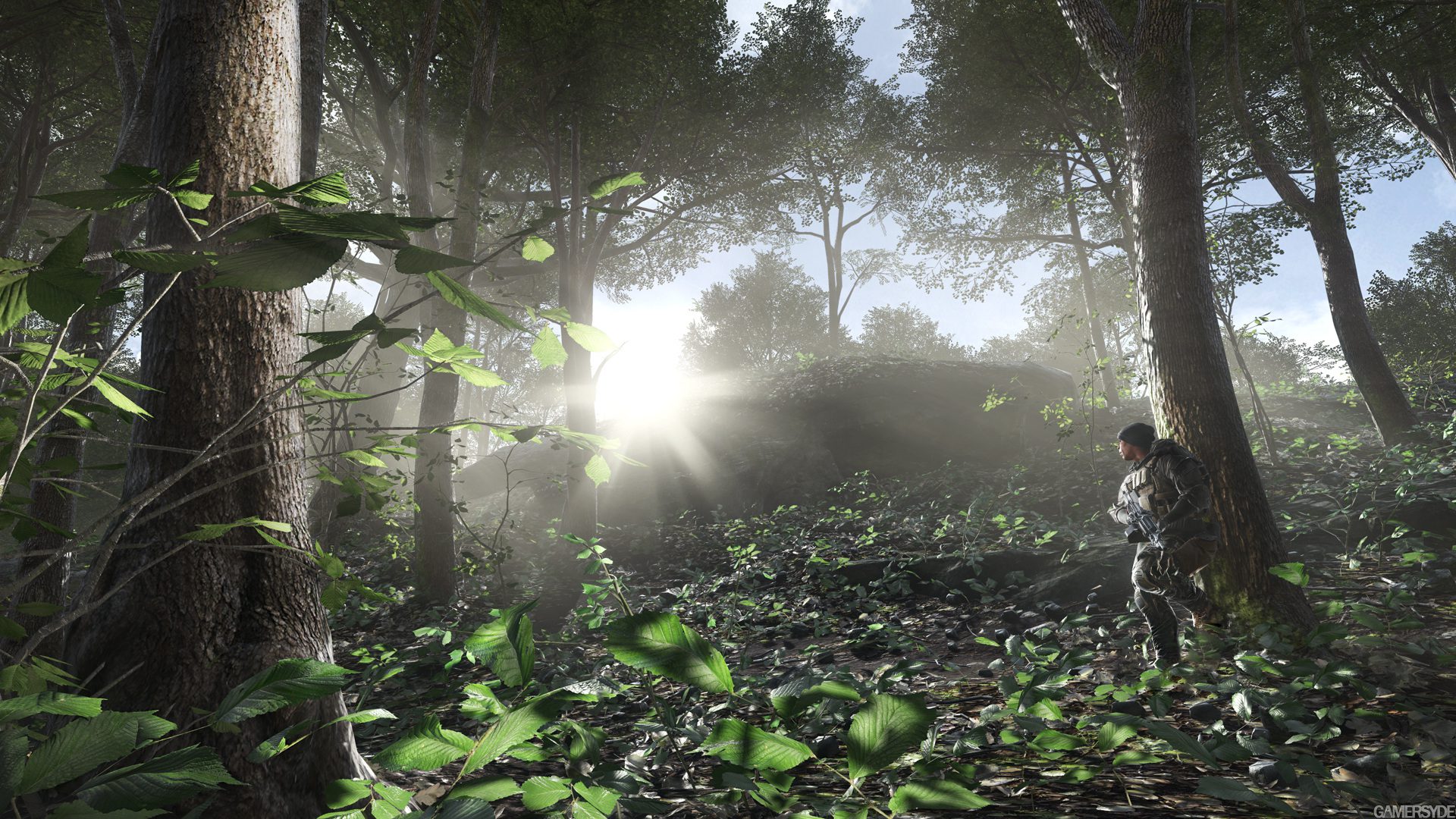In Hello World issue 9, out today, Elliott Hall and Tom Bowtell discuss The Digital Ghost Hunt: an immersive theatre and augmented reality experience that takes a narrative-driven approach in order to make digital education accessible.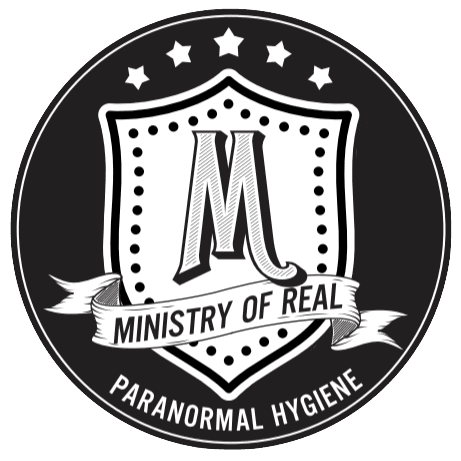
The Digital Ghost Hunt combines coding education, augmented reality, and live performance to create an immersive storytelling experience. It begins when a normal school assembly is disrupted by the unscheduled arrival of Deputy Undersecretary Quill of the Ministry of Real Paranormal Hygiene, there to recruit students into the Department’s Ghost Removal Section. She explains that the Ministry needs the students’ help because children have the unique ability to see and interact with ghostly spirits.
Under the tutelage of Deputy Undersecretary Quill and Professor Bray (the Ministry’s chief scientist), the young ghost-hunters learn how to program and use their own paranormal detectors. These allow students to discover ghostly traces, translate Morse code using flickering lights, and find messages left in ultraviolet ectoplasm. Meanwhile, the ghost communicates through a mixture of traditional theatrical effects and the poltergeist potential of smart home technology. Together, students uncover the ghost’s identity, discover her reason for haunting the building, unmask a dastardly villain, find a stolen necklace, clear the ghost’s name, right an old wrong, and finally set the ghost free.
The project conducted two successful test performances at the Battersea Arts Centre in South London in November 2018, funded by a grant from AHRC’s New Immersive Experiences Programme, led by Mary Krell of Sussex University. Its next outing will be at York Theatre Royal in August.
Adventures in learning
The Digital Ghost Hunt arose out of a shared interest in putting experimentation and play at the centre for learners. We felt that the creative, tinkering spirit of earlier computing — learning how to program BASIC on an Atari 800XL to create a game, for example — was being supplanted by a didactic and prescriptive approach to digital learning. KIT Theatre’s practice — creating classroom adventures that cast pupils as heroes in missions — is also driven by a less trammelled, more experiment-led approach to learning.
We believe that the current Computer Science curriculum isn’t engaging enough for students. We wanted to shift the context of how computer science is perceived, from ‘something techy and boyish’ back to the tool of the imagination that it should be. We did this by de-emphasising the technology itself and, instead, placing it in the larger context of a ghost story. The technology becomes a tool to navigate the narrative world — a means to an end rather than an end in itself. This helps create a more welcoming space for students who are bored or intimidated by the computer lab: a space of performance, experiment, and play.
Ghosts and machines
The device we built for the students was the SEEK Ghost Detector, made from a Raspberry Pi and a micro:bit, which Elliot stapled together. The micro:bit was the device’s interface, which students programmed using the block-based language MakeCode. The Raspberry Pi handled the heavier technical requirements of the show, and communicated them to the micro:bit in a form students could use. The detector had no screen, only the micro:bit’s LEDs. This meant that students’ attention was focused on the environment and what the detector could tell them about it, rather than having their attention pulled to a screen to the exclusion of the ‘real’ world around them.
In addition to the detector, we used a Raspberry Pi to make ordinary smart home technology into our poltergeist. It communicated with the students using effects such as smart bulbs that flashed in Morse code, which the students could then decode on their devices.
To program their detectors, students took part in a series of four lessons at school, focused on thinking like a programmer and the logic of computing. Two of the lessons featured significant time spent programming the micro:bit. The first focused on reading code on paper, and students were asked to look out for any bugs. The second had students thinking about what the detector will do, and acting out the steps together, effectively ‘performing’ the algorithm.
We based the process on KIT Theatre’s Adventures in Learning model, and its Theory of Change:
- Disruption: an unexpected event grabs attention, creating a new learning space
- Mission: a character directly asks pupils for their help in completing a mission
- Achievement: pupils receive training and are given agency to successfully complete the mission
The Ghost Hunt
During these lessons, Deputy Undersecretary Quill kept in touch with the students via email, and the chief scientist sent them instructional videos. Their work culminated in their first official assignment: a ghost haunting the Battersea Arts Centre — a 120-year-old former town hall. After arriving, students were split into four teams, working together. Two teams analysed evidence at headquarters, while the others went out into places in the building where we’d hidden ghostly traces that their detectors would discover. The students pooled their findings to learn the ghost’s story, and then the teams swapped roles. The detectors were therefore only one method of exploring the narrative world. But the fact that they’d learned some of the code gave students a confidence in using the detectors — a sense of ownership. During one performance, one of the students pointed to a detector and said: “I made that.”
Future of the project
The project is now adapting the experience into a family show, in partnership with Pilot Theatre, premiering in York in summer 2019. We aim for it to become the core of an ecosystem of lessons, ideas, and activities — to engage audiences in the imaginative possibilities of digital technology.
You can find out more about the Digital Ghost Hunt on their website, which also includes rather lovely videos that Vimeo won’t let me embed here.
Hello World issue 9
The brand-new issue of Hello World is out today, and available right now as a free PDF download from the Hello World website.
UK-based educators can also sign up to receive Hello World as printed magazine FOR FREE, direct to their door, by signing up here. And those outside the UK, educator or not, can subscribe to receive new issues of Hello World in their inbox on the day of release.
Website: LINK

